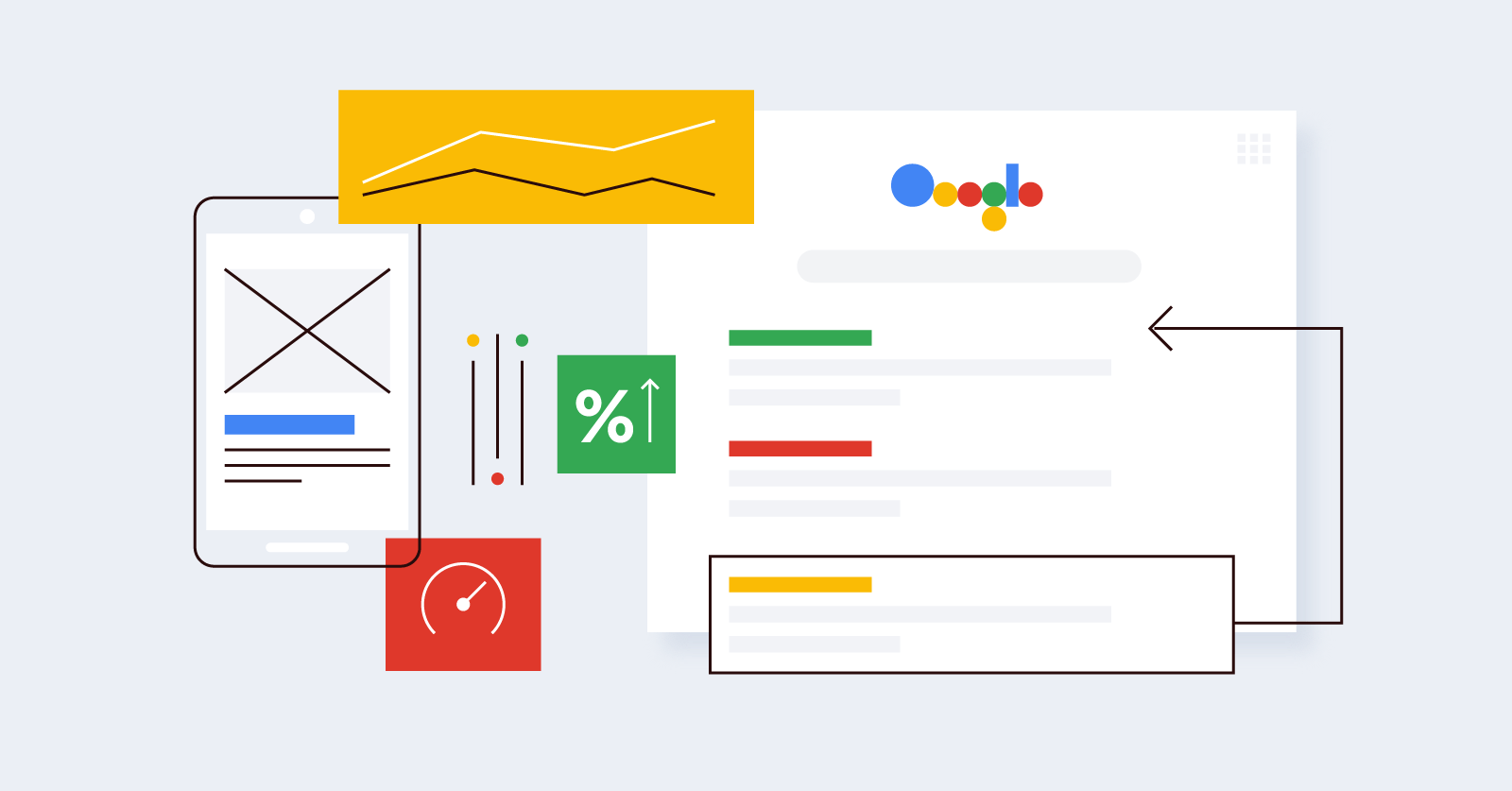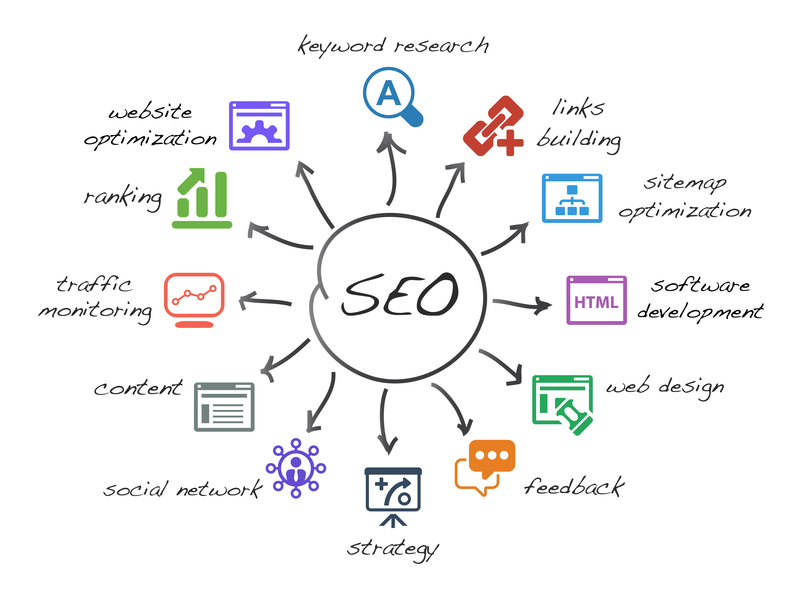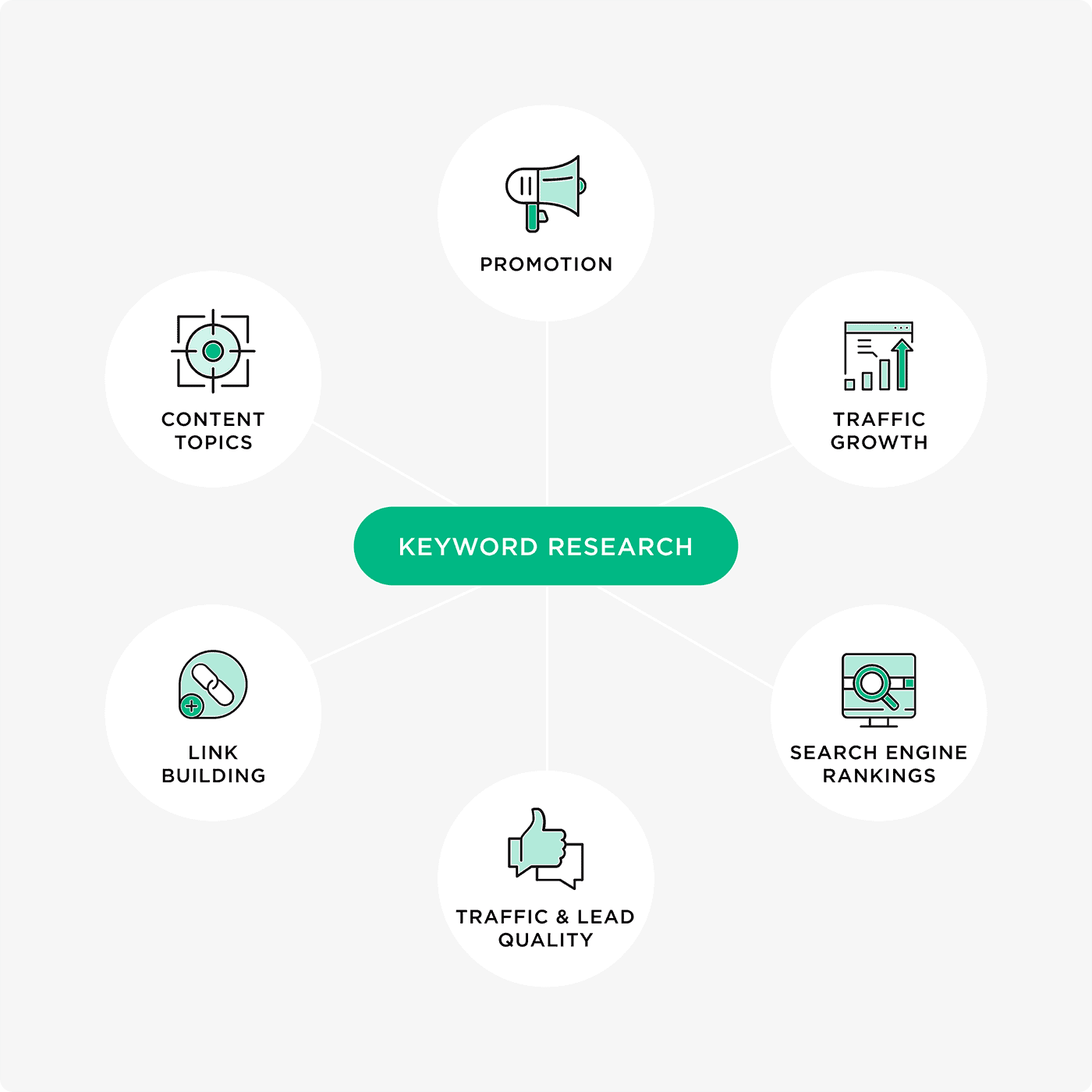
Is your business taking full advantage of SEO to enhance its growth?
In order to reap the rewards of increased traffic, authority, leads, and sales, proper implementation of SEO is crucial.
Failing to do so may result in your business being overlooked online, and that’s certainly not desirable.
Staying up to date with SEO trends can be challenging, but it’s vital to remain vigilant.
Google continuously adjusts its search algorithms, making it impossible to rely on past SEO techniques.
Therefore, it’s crucial to stay informed with the latest SEO guidelines to ensure your business thrives.
Fortunately, we’re here to assist you.
Our comprehensive guide includes the most current SEO practices to enhance the visibility of your content in search results, resulting in increased traffic, leads, and sales.
Table of Contents
ToggleWhat Is SEO?
SEO stands for Search Engine Optimization. It refers to the practice of optimizing a website or online content to improve its visibility and ranking in search engine results pages (SERPs).

The goal of SEO is to increase the quantity and quality of organic (non-paid) traffic to a website or online platform.
This is achieved by employing a range of techniques and strategies, including keyword research, on-page optimization, link building, and content creation, to make a website more attractive to search engines like Google, Bing, and Yahoo.
By improving a website’s search engine ranking, SEO helps businesses and individuals increase their online presence and reach a larger audience.
How Does SEO Work?
SEO involves optimizing website content, conducting keyword research, and earning inbound links to improve a webpage’s ranking and increase website visibility.
Although SEO efforts can take months to fully materialize, the effects can be seen on the SERP once the webpage has been crawled and indexed by search engines.
Rankings
Search engines use rankings to determine a webpage’s position in the SERP.

Rankings range from position number zero to the final number of search engine results for a query, and a webpage can only rank for one position at a time.
A webpage’s ranking can change over time due to various factors such as age, competition in the SERP, or algorithm changes made by the search engine.
Visibility
Search visibility refers to how prominently a domain appears in search engine results.
A domain with lower search visibility is not visible for many relevant search queries, while a domain with higher search visibility appears more frequently in search results.
Both search rankings and visibility are crucial for achieving the main objectives of SEO, which are increasing traffic and domain authority.
What’s The Importance Of SEO?
SEO is crucial for positioning your brand throughout the entire buying journey.
By optimizing your website and content for search engines, SEO can ensure that your marketing strategies align with the new buying behavior.
As Google has acknowledged, customer behavior has changed permanently, with 92% of internet searches occurring on a Google property as of June 2021.
Customers prefer to research and navigate the majority of the buying process independently. For instance, Statist found that 60% of people research a brand online before making a purchase, and this process has become more complex.
Additionally, according to DemandGen’s 2022 B2B Buyer’s Survey, 67% of B2B buyers start the buying process with a broad web search.
During the buying process, customers use search engines to find information about their problems and potential solutions.
They evaluate available alternatives based on reviews or social media hype before reaching out to a company.
Therefore, appearing in customers’ search results is the only way to capture their attention and consideration.
How does Google know how to rank a page?
Google uses complex algorithms that take into account a variety of factors to determine the ranking of a page.

These algorithms analyze the content of the page, the quality of inbound and outbound links, user behavior, and many other factors.
Google’s algorithms are constantly evolving and updating, as the company strives to provide the most relevant and useful search results to its users
Search engines use two main factors to provide relevant results to users:
- Relevancy between the search query and the content on a page. Search engines consider various factors such as keywords, topic, and content quality to determine relevancy.
- Authority is measured by a website’s popularity on the Internet. Google assumes that the more popular a page or resource is, the more valuable its content is to users.
Search engines use complex algorithms to analyze various factors, including relevancy and authority, in order to deliver the most accurate information to users.
Although these algorithms are kept secret, some ranking factors have been identified over time by SEOs and are the focus of an effective SEO strategy.
The E-A-T framework, which stands for “expertise”, “authoritativeness”, and “trustworthiness”, can help improve the quality of your SEO content and indirectly impact direct ranking factors.
Improving elements such as content, image filenames, and internal links can positively affect your search rankings and visibility, as each of these actions can improve a ranking factor.
What Is SEO Strategy?
SEO strategy is a comprehensive plan of actions designed to improve the visibility and ranking of a website in search engine results pages (SERPs).

It involves identifying and optimizing for the relevant keywords, creating high-quality content, improving website structure and technical aspects, building links, and monitoring and measuring results to continuously improve the website’s performance in search engines.
The goal of an SEO strategy is to increase organic traffic, improve brand awareness, and ultimately drive revenue or other desired outcomes.
A successful SEO strategy requires a deep understanding of search engine algorithms, target audience, and competition.
To ensure high rankings for your website, it is essential to focus on three fundamental components of SEO strategy – technical website setup, content, and links. Let’s discuss each one in detail.
1. Technical Setup:
There are three critical steps that need to be taken for your website to rank on search engines. First, search engines must find your website’s pages on the web.

Then, they need to scan and comprehend the page’s topic and keywords. Finally, search engines add the page to their index to consider displaying it for relevant queries.
However, there’s a catch. A webpage appears differently to a search engine than it does to a human visitor.
While you see images, colors, formatting, and links, search engines only see text. As a result, any content that cannot be rendered as text becomes invisible to search engines.
Therefore, it’s possible that your website’s content may be inaccessible to search engines, despite appearing fine to you. To demonstrate.
Technical setup, or on-site optimization, is crucial to ensure that your website and its pages are scannable and indexable by Google. The most significant factors that impact technical setup include:
- Website navigation and links:
Search engines crawl websites by following links. Therefore, it’s necessary to set up navigation and links in a text-only format since search engines cannot recognize images.
- Simple URL structure:
Search engines prefer concise and straightforward URL structures. Therefore, it’s advisable to keep URLs as short as possible, focusing only on the primary keyword you want to optimize the page for.
- Page speed:
Search engines consider page load time as an indicator of quality. Many website elements, such as image size, can affect page speed. You can use Google’s Page Speed Insights Tool to get suggestions on how to enhance your pages.

- Dead Links and Broken Redirects :
When a visitor clicks on a dead link, it takes them to a non-existent page, while a broken redirect directs them to a resource that may no longer exist. Both of these scenarios provide a poor user experience and can also prevent search engines from indexing your content.
- Sitemap and Robots.txt :
Files A sitemap is a file that lists all the URLs on your website. Search engines use it to identify which pages to crawl and index. On the other hand, a robots.txt file instructs search engines which content not to index (such as certain policy pages you do not want to appear in search results). Creating both of these files can speed up the crawling and indexing of your content.
Search engines become confused when they encounter pages that contain identical or very similar content. They may have difficulty displaying any of these pages and, if found, may penalize your website. As a result, search engines consider duplicate content to be a negative ranking factor.
2. Importance of Content in SEO
Whenever a search engine is used, the goal is to find information on a particular topic or problem, which is known as content.

This content can take various forms such as text-based materials like blog posts or web pages, as well as videos, product recommendations, and business listings.
Essentially, everything that provides information or solves a problem is considered content.
In terms of SEO, having quality content is essential for improving search visibility.
There are two main reasons why content is crucial in SEO:
Firstly, customers rely on content when they search for information. No matter what they seek, it’s the content that satisfies their needs. Therefore, the more content you produce, the higher the likelihood of achieving better search visibility.
Secondly, search engines utilize content to evaluate the relevance of a page. As we discussed earlier, the idea of a correlation between a page and a person’s search query is fundamental. During the crawling process, search engines analyze various factors, such as page length and structure, to determine a page’s topic and quality. Based on this analysis, search algorithms can rank the most pertinent pages for a given query.
The process of optimizing content begins with keyword research.
Keyword Research
Keyword research is an essential part of SEO strategy. It involves identifying the words and phrases that people use when searching for information online.

By targeting relevant keywords in your content, you can improve your chances of ranking higher in search engine results pages (SERPs) and drive more traffic to your website.
To conduct keyword research, there are several tools you can use, such as Google Keyword Planner, Ahrefs, Moz Keyword Explorer, and SEMrush.
These tools allow you to find keywords that are relevant to your business, determine their search volume, and analyze their competition.
When conducting keyword research, it’s important to focus on long-tail keywords – longer, more specific phrases that reflect the user’s intent.
These are usually easier to rank for and have a higher conversion rate since they’re more likely to reflect the user’s intent.
For example, “best Italian restaurant in New York City” is a long-tail keyword that targets a specific search query.
In addition to finding relevant keywords, it’s also important to consider the user’s search intent. What are they looking for?
Are they looking for information or trying to make a purchase? Understanding the user’s intent behind their search query will help you optimize your content and target the right keywords to attract the right audience.
Overall, keyword research is a crucial step in SEO. By targeting the right keywords and understanding the user’s intent, you can create content that meets their needs, improves your search engine rankings, and ultimately drives more traffic to your website.
3. Links
Google relies on three categories of links to assess the quality of a website.

- Backlinks or Inbound Links
Google evaluates backlinks to determine the relevancy and authority of your content. Backlinks from high-quality, reputable websites indicate to Google that your content is trustworthy and authoritative. Conversely, links from low-quality websites can negatively impact your site’s reputation. SEMrush provides a tool for checking your backlinks. Building meaningful backlinks from respected experts and organizations in your industry is crucial for optimizing your site.
- Outbound Links
Demonstrating that you create quality content for your visitors is a top priority in optimizing your site for Google. One way to achieve this is by including outbound links to relevant, authoritative sites in your industry. However, avoid overloading your content with too many links. When researching content, make sure to pull information from reliable sources with high domain authority and link to them when appropriate.
- Internal Links
Internal links connect pages on your website, increasing their value to both visitors and Google. Internal linking encourages visitors to explore more content and indicates to search engine bots that they should crawl additional pages on your site.
Tip: All three types of links should include descriptive anchor text that clearly describes the content to which the link points.
- Add Title Tags, Meta Descriptions, and Image Tags
One crucial aspect of an SEO checklist involves adding title tags, meta descriptions, and image tags to your web pages. These tags offer important information to search engines and can improve your website’s ranking.
Title tags are particularly critical, as they are a primary factor that search engines use to evaluate a web page’s relevance and rank.
Meta descriptions, on the other hand, are the brief descriptions that appear beneath your page’s title in search engine results pages (SERPs).
Crafting compelling meta descriptions can persuade users to click through to your website, making them a valuable tool for attracting traffic.
How To Monitor & Track SEO Results
Monitoring and tracking SEO results is a critical part of any successful digital marketing strategy. Here are some steps you can take to effectively track and measure your SEO efforts:

- Set up website analytics: Google Analytics is a powerful tool that allows you to track website traffic, user behavior, and more. Install this tool on your website to gain valuable insights into your site’s performance.
- Define your key performance indicators (KPIs): Decide which metrics are most important to your business and track them regularly. Examples of KPIs for SEO include organic traffic, search engine ranking position (SERP), and conversion rates.
- Use SEO tracking tools: Tools like SEMrush, Moz, and Ahrefs can help you monitor your site’s performance, identify areas for improvement, and track your competitors’ activities.
- Monitor your site’s backlink profile: Backlinks are an important factor in search engine rankings. Regularly monitoring your backlink profile can help you identify new opportunities for building links and ensure that your existing links are high-quality.
- Regularly review and update your website: Keep your website up-to-date with fresh, relevant content and regularly review and update your website’s technical elements, such as metadata and site speed.
By consistently monitoring and tracking your SEO efforts, you can identify areas for improvement, measure your progress, and ultimately achieve your digital marketing goals.
Also, Read:
Conclusion:
While it can be overwhelming to dive into the world of SEO, implementing these straightforward tips can help boost your website’s search engine rankings and improve your online visibility.
This SEO checklist covers essential optimization practices, but it’s crucial to stay current with the latest trends to ensure continued success.
Though trends may change, certain elements like conducting competitor keyword research, optimizing images for faster load times, prioritizing mobile optimization, and utilizing free tools like Ubersuggest and paid keyword analysis tools remain essential for effective SEO.
Use this article as a guide, but keep in mind that SEO is an ongoing effort rather than a one-time fix. Consistently working on optimization can lead to long-term benefits for your website.